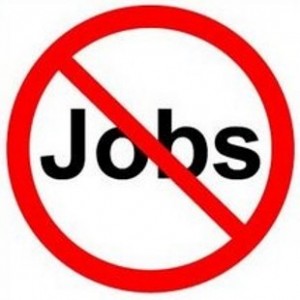Corporate mergers and acquisitions are heating up, with French pharmaceutical giant Sanofi-Aventis, U.S. technology companies Hewlett-Packard and Intel and others preparing to purchase other companies. No doubt strategic acquisitions are a better use of cash than letting it idle on the balance sheet. But this activity represents a vote of no-confidence in our economic future. When such corporate leaders could not think of a more imaginative way to invest in their futures (more research and development to seed future innovation perhaps?) than the pursuit of operational efficiency, this does not bode well. Of course, the profits to be generated will result from cost savings as the acquired company is integrated into its new corporate owner. This suggests more corporate downsizing and rising unemployment. It is hardly likely to persuade small business owners that we should take on debt and hire when the Fortune-500 appear to share our lack of confidence in our economic future. The Administration does not appear to have taken note of the implications of this spate of merger activity as it is pushing for a major piece of legislation for spur small business lending. Even with the capital available, who would borrow?
Archive for the ‘Entrepreneurship’ Category
Corporate M&A Activity Signals Poor Outlook
Monday, August 30th, 2010Unemployment Continues to Rise
Thursday, August 19th, 2010The number of people filing first-time unemployment claims last week rose to 500,000, a level not seen since last November and well above the expectations of most economists. But the true number of unemployed Americans may be much worse than even the grim data of the U.S. Department of Labor indicate. TechnoMetrica Market Intelligence, which conducts polls for major new media such as Investors’ Business Daily, has expressed skepticism about the official unemployment numbers. In its latest poll, TMI found that 28.6% of households surveyed have at least one member who is out of work, which translates to an unemployment rate of over 22%, well above the official 9.5% unemployment rate. The Bureau of Labor Statistics tabulates the total unemployment rate at 16.5%.
The largest source of the discrepancies between official and unofficial numbers is likely the number of people who are underemployed with part-time jobs or temporary positions for which they are overqualified. According to the Department of Labor, 8.6 million Americans fall into this category. Indeed, a Pew Research survey found that more than half of workers had suffered a decline in their income. The “discouraged unemployed”, those who have exhausted their allotted unemployment benefits or who have given up working, also contribute to the undercounting. Whichever measure you use to capture the data, the unemployment rate continues to be unacceptable. Had policymakers focused on supporting the traditional engine of job growth, small businesses, rather than the big bailout strategy, we would be in a different place.
Gloom All Round
Tuesday, August 17th, 2010It appears to be a global phenomenon: increasingly downbeat small business owners who see a completely different economy than the one that exists for large corporations. The current monthly survey of small business sentiment conducted by the National Federation of Independent Business states “seventy-three (73) percent of the owners report that the current period is not a good time to expand. Of those, 66 percent cite the weak economy as the main reason, but 18 percent cite the “political climate” as the source of uncertainty. This elevated level of concern has prevailed since January 2008 when Congress began debating the “stimulus” and other possible actions to deal with the economy and the government changed hands. The expiration of the Bush tax program and the implementation of the health care bill represent the two largest tax increases in modern history. Add to that serious talk of a VAT and passing cap and trade. Nothing here to create optimism about the future for business owners or consumers. Top that off with government borrowing of $1.8 trillion last year and $1.5 trillion this year and on into the future, it is no surprise that owners are fearful and pessimistic.” The survey didn’t find concerns about small business access to capital as the most credit worthy businesses are reluctant to assume additional debt: “The saving rate is over six percent, good for the long haul but tough for firms that became accustomed to a “zero” savings rate supported by unsustainable home price appreciation and the borrowing that supported. But most “good” borrowers are on the sidelines, still waiting for a reason to seek a loan and expand their businesses.” To read the report in its entirety, click here.
Spending Caravan
Wednesday, August 4th, 2010A group of small business owners in St. Louis, Missouri plan a “caravan” across the Gulf Coast traveling from Bay St. Louis, Mississippi as far east as Panama City Beach with stops along Mississippi and Alabama coastal communities, including Biloxi, Gulfport, Pascagoula and Grand Bay. The group plans to spend money at local small businesses at each stop and in the process, create a “Gulf Cara-van Kit” to help other cities recreate their project to aid Gulf Coast communities in their recovery from the losses arising from the oil spill. Group members will blog and tweet about their caravan and have published a site, www.gulfcaravan.com, for more information. Called “tourism with a purpose”, the caravan plans local media events to call attention to the need to support the Gulf Coast. They can look forward to a warm welcome as mayors of several of the communities plan to present the group with keys to their cities. I am planning an event in the Gulf Coast this fall; we should all do what we can to show our support.
Unusual Reality Show
Tuesday, August 3rd, 2010I happened across an unusual television program this evening, Tony Robbins’ Breakthrough, and was drawn in by the conflict immediately presented. Robbins, the famous motivational speaker, presented a family breakdown precipitated by financial strain. The husband had lost the job he had held with his employer of 23 years and then, unable to find comparable employment elsewhere, decided to start his own small business. I won’t spoil it for you, but at the start of the program, the family faced homelessness as the mortgage bank had initiated foreclosure proceedings. The husband’s business had not been able to sustain the family’s lifestyle. It appears that the loss of assets, more than the loss of income, caused the strain, as the couple emptied their 401k retirement savings to start the business.
I am of two minds on this matter: I believe we need to start teaching entrepreneurship in the schools. Our educational system produces graduates for the corporate sector who know how to tick the boxes, study for the tests and pass through the grades. That may have worked when a compliant workforce that was corporate-ready was called for. But if we are to have any hope of at least matching our parents’ standard of living, let alone earning our way out of debt, we need growth and entrepreneurship. But the skills one needs to be a practitioner in a large organization are not the same as the skills one needs to run a business. The television program Robbins presented was powerful for the raw emotions elicited by the financial strain of the married couple. The husband’s self-esteem had taken a beating for his business failure and the wife found herself unable to cope. Our policymakers need to look at strategies for economic growth, which is not the same thing as this piecemeal effort by the states to promote self-employment as an act of desperation. The pain of these poor choices made an otherwise difficult television program impossible to turn off.
Made in America
Tuesday, July 20th, 2010My TiVo is set to record the Travel Channel weekdays from 9:00 – 10:00 a.m., the broadcast slot for John Ratzenberger’s program “Made in America”. Most of us would recognize the program host as the actor who played Cliff Clavin in the television series “Cheers”. I was surprised to learn how many characters he voiced for Pixar animations. But we see a whole other side to John Ratzenberger when he welcomes viewers at the opening of this program: “Hi, I’m John Ratzenberger. If you want to know America, you’ve got to meet the folks who work in factories and workshops. People who make real things and take pride in what they do. And then, you have to go in there with them to see how it’s done. So, that’s what I did. I poked around every corner… More of this country — big cities, small towns, and whatever was in between — looking for the soul of America. And you know what? I found it everywhere. So sit back and relax, because we’ve got it made… in America.”
Over the course of the series, Ratzenberger criss-crosses the United States to visit factories and meet workers responsible for iconic American brands. It is a bit sentimental as you remember childhood favorites – like when he visits the Crayola Crayons factory or the factory where the Monopoly game boards are assembled. The segment taped in Arkansas, where Frye Boots are made, was a delight; those were the status symbol when I was in high school. My favorite segments were the tours of KitchenAid, Kohler, Viking Appliances, Hallmark Cards, Brooks Brothers, Hartmann Luggage, Yankee Candle, Pyrex, Tom’s of Maine, Maker’s Mark Distillery, Pendleton Woolen Mills, Steinway, Craftsman Tools, Stickley Audi Furntiture, Steuben Glass, Longaberger Basket Company. The series is an inspiration to all small business owners, even those of us who work in the service sector, as we can see the pride in workmanship and lasting quality that these companies represent. You can also check out Mr. Ratzenberger’s website where he makes the case for investment in domestic manufacturing. His program is part of my daily dose of inspiration.
Band-Aids Don’t Help
Saturday, July 17th, 2010Do a Google search on small business promotion and you will be amazed at the incentives offered by local and state governments. They are partnering with the Kauffman Foundation to offer FastTrac® entrepreneurial training for new ventures and growth ventures. They are sponsoring business plan competitions to offer modest cash awards. They are investing in business incubators to make low-cost start-up space available. Why the sudden enthusiasm for entrepreneurs? Because we have a serious employment crisis in the United States. Our private sector has lost over 10 million jobs since 2007, even before the banking crisis. The average period of unemployment exceeds 35 weeks and many of the unemployed are no longer counted in the ranks, as they drop out of the market altogether when they lose benefits or become completely discouraged. The initiatives offered by state and local governments are too weak to address our root problem: uncertainty around rising taxes (both the magnitude and the timing of anticipated increases), the implementation of healthcare reform and other measures, including lack of access to capital, deter small businesses from hiring. Until the federal government gets serious about consistent, responsible long-term policies for economic growth, band-aids from local governments won’t address the unemployment crisis.
Fail Early
Saturday, July 10th, 2010“Fail early, fail often” is the mantra of software developers. When writing code, the sooner a programmer discovers an error, the sooner he can correct it. Delaying production until perfection can be achieved guarantees a product that is obsolete by the time it reaches the market. But as I have discovered, learning to fail is hard. Think about your experiences in elementary school – no student raises his hand unless he is sure he knows the answer. We are socialized to believe that correct answers are what matter: tick the box, get a good grade, move along. And so it is a struggle to set aside what we have been socialized to do to accept failure for the gift that it is. But children of other cultures undergo a very different socialization process. Stefan told me that when he was in college and in graduate school, the engineering faculty assigned problems to students that they knew had not yet been solved. They evaluated the quality of the thinking and reasoning, not the correct answer. When I was in college, and I, too, was a science major, the faculty would award partial credit for showing your work, but the grade was dependent of a correct answer. Our educational institutions are becoming anachronisms of an age where students were socialized for post-graduate employment in large institutions. We need more creative thinkers and more risk takers. It is time to re-evaluate the lessons we teach our children. We are doing them a terrible disservice to impose upon them the educational system we inherited.
Small Business and Economic Development
Wednesday, June 30th, 2010Harvard Professors Edward L. Glaeser and William R. Kerr caution policymakers to refrain from “smokestack chasing”, or using tax breaks to attract large corporate employers. Their research shows that regional economic growth is highly correlated with the presence of many, small entrepreneurial employers, not a few large ones. In the July-August 2010 issue of the Harvard Business Review, they cite a study of U.S. metropolitan regions that shows that cities whose numbers of firms per worker were higher than average in 1977 experienced 9% faster employment growth in the two decades that followed. They write:
“Politicians enjoy announcing a big company’s arrival because people tend to think that will mean lots of job openings. But in a rapidly evolving economy, politicians are all too likely to guess wrong about which industries are worth attracting. What’s more, large corporations often generate little employment growth even if they are doing well. Automakers, for instance, often source parts and other inputs from their internal networks, which limits employment spillover effects. Or a firm may fill staffing needs by transferring employees. Instead of trying to buy their way out of the recession with one big break to one big employer, politicians should reduce costs for start-up companies and small businesses. Research shows that once entrepreneurship gets established, it tends to be self-perpetuating.”
What I particularly enjoyed about their piece in HBR was the plot of small firms vs. entrepreneurial growth by city. Cities like Colorado Springs and Sarasota appear to be hotbeds of entrepreneurial activity, while New York City, which offered every kind of tax break and subsidy to Wall Street, was ranked near the very bottom.
Low-Cost Marketing In a Tough Economy
Tuesday, June 29th, 2010Queensboro Shirt Company, an online corporate apparel company in Wilmington NC, conducted a national survey of 3,700 of its small business customers. They found that their employees regard corporate logo shirts as a status symbol of sorts, a sign of gainful employment in a rough economy. Even better, the shirts advertise employment with a small business at a time when large corporations have lost the public trust. “It used to be that I would only wear a company shirt if I had to, otherwise it would hang in my closet collecting dust,” says Nicole Volpe of Elle Hair and Spa in Raleigh, NC. “But I’m happy to have this job right now, I’m proud of where I work, and I’ll wear our shirts just about anywhere.” Queensboro claims to be the first to put a company logo on a collared shirt, twenty-eight years ago. Admittedly the survey has inherent bias: the company polled its customers who had already purchased its shirts, not a random selection of small businesses. Nevertheless, I was intrigued to read that employees would wear corporate-branded items in social settings outside of the workplace. It is a low-cost advertising option that I had not considered.







